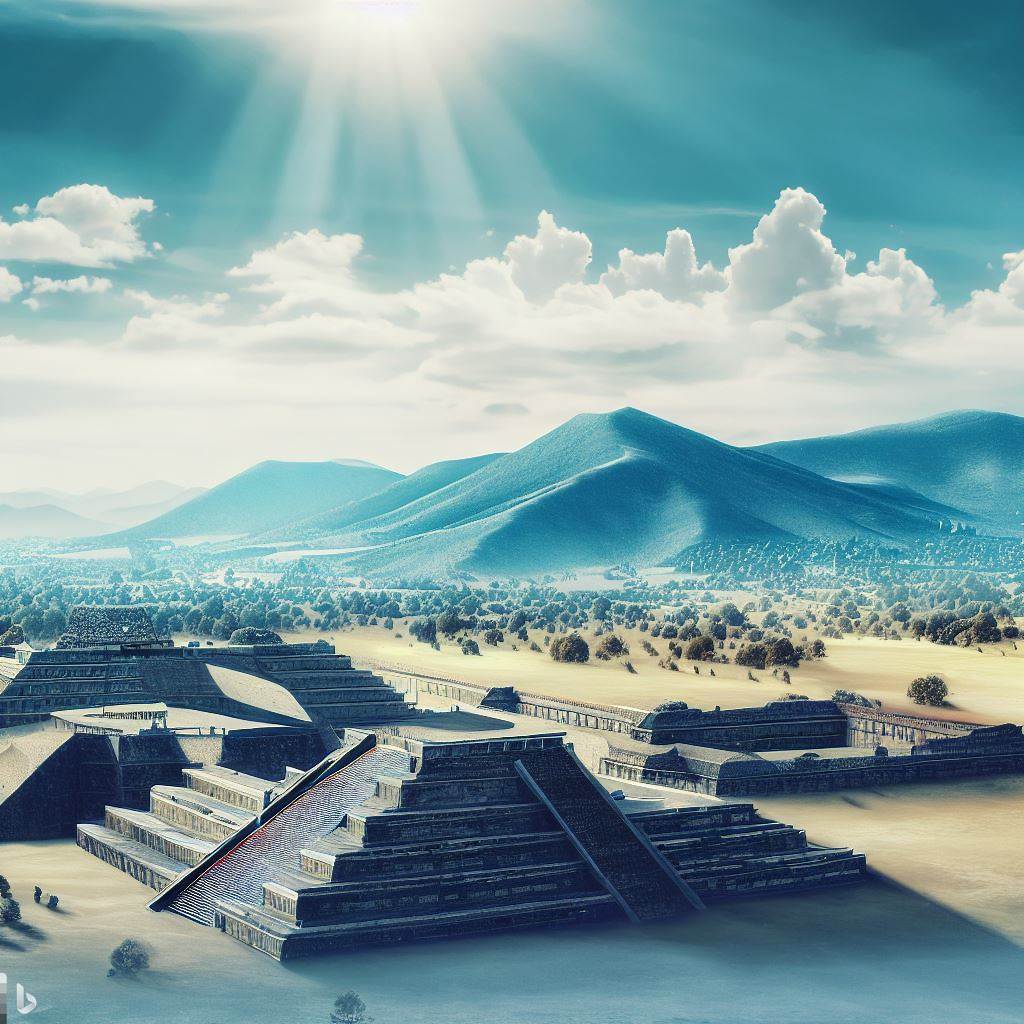Introduction
During my trips to Mexico City, I couldn’t resist the allure of exploring the ancient wonders of the Teotihuacan Pyramids. As I ventured into this archaeological marvel, I found myself immersed in a world that transcended time, where the echoes of a rich and enigmatic civilization whispered through the air. The Teotihuacan Pyramids are an iconic symbol of Mexico’s pre-Columbian history and a testament to the incredible engineering prowess of the ancient Teotihuacan people.
Thank you for reading this post, don't forget to subscribe!
Nestled within the Valley of Mexico, just a short distance from the bustling metropolis of Mexico City, these magnificent pyramids beckon travelers from all corners of the globe to unravel their mysteries and stand in awe of their grandeur. As I approached the site, the anticipation built inside me. The imposing structures of the Sun Pyramid and the Moon Pyramid loomed in the distance, their peaks reaching towards the heavens.
Walking along the ancient Avenue of the Dead, I could only imagine the vibrant life that once thrived within these sacred grounds. The Teotihuacan civilization flourished between the 1st and 7th centuries, and their legacy lives on in the intricate stone carvings, murals, and architectural marvels that still stand today. As I delved deeper into the site, I marveled at the meticulous craftsmanship and the mathematical precision of the structures, which demonstrated the advanced knowledge and ingenuity of the Teotihuacan people.
Ascending the steps of the Sun Pyramid, I felt a mixture of exhilaration and reverence. From the top, the panoramic view was breathtaking, offering a sweeping vista of the entire archaeological complex. I tried to imagine the city in its prime, bustling with activity, as thousands of people went about their daily lives in this ancient urban center. The precise alignment of the pyramids with celestial bodies fascinated me, evidence of an astute understanding of astronomy and the importance of cosmic order in the Teotihuacan culture.
As the sun began its descent, casting a golden glow over the pyramids, I couldn’t help but reflect on the timelessness of the Teotihuacan Pyramids. These structures have withstood the test of time, evoking a sense of wonder and instilling a desire to unravel the secrets they hold. Exploring the Teotihuacan Pyramids is not just a journey through history; it is a spiritual pilgrimage that connects us to the ancient cultures that shaped the world we inhabit today. Mexico City’s proximity to this awe-inspiring site makes it a must-visit for any traveler seeking to immerse themselves in the rich tapestry of Mexico’s past.
Welcome to the captivating world of Teotihuacan Pyramids, where ancient mysteries and architectural marvels converge. In this introductory chapter, we will set the stage for an enchanting journey through time and space, inviting you to discover the mystique of Teotihuacan—a place steeped in history and cultural significance.
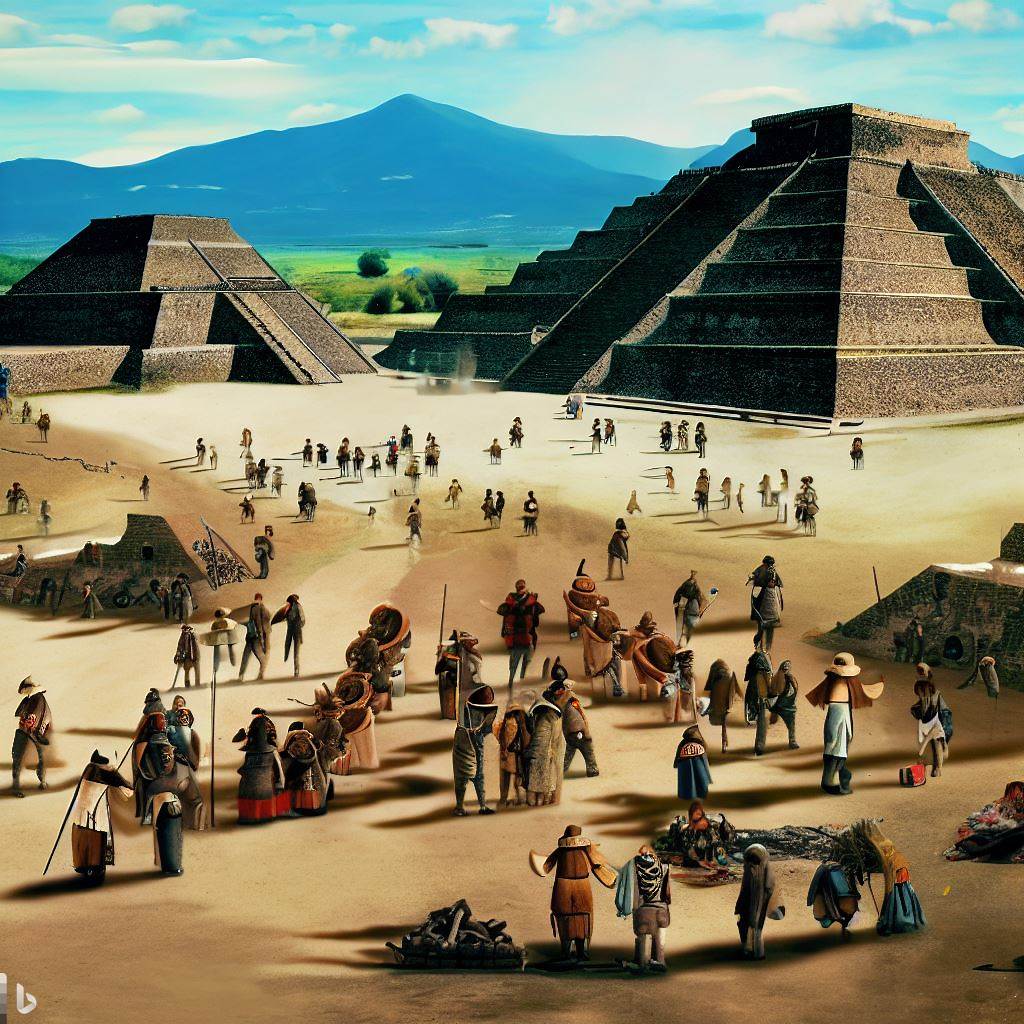
Unveiling the Marvels of Teotihuacan Pyramids
Setting the Stage for an Enchanting Journey
As you embark on this exploration of Teotihuacan, picture yourself standing at the threshold of a place where ancient civilizations thrived. Teotihuacan, located in modern-day Mexico, is a UNESCO World Heritage Site renowned for its awe-inspiring pyramids and rich cultural heritage.
Teotihuacan’s allure lies not only in its breathtaking structures but also in the intriguing questions it poses. Who built these pyramids? What purpose did they serve? How did thisonce-mighty city meet its enigmatic end? In the chapters that follow, we will endeavor to answer these questions and more.
Discovering the Mystique of Teotihuacan
Teotihuacan, often referred to as the “City of the Gods,” was a thriving metropolis that flourished between the 1st and 7th centuries A.D. It was characterized by vast monuments, intricate artistry, and a complex social structure. But what sets Teotihuacan apart from other ancient cities is the enigma surrounding its history.
The allure of Teotihuacan extends beyond its historical significance. It beckons travelers, archaeologists, and history enthusiasts alike to explore its wonders. From the grand Pyramid of the Sun to the intricate carvings of the Temple of the Feathered Serpent, Teotihuacan offers a glimpse into a world long past.
Intrigued? As we journey deeper into Teotihuacan’s mysteries, you’ll gain insights into its architectural wonders, cultural significance, and the ongoing research efforts that seek to unravel its secrets. So, fasten your seatbelt, and get ready to embark on an unforgettable expedition through the heart of ancient Mesoamerica.
Stay tuned for the next chapter, where we’ll delve into the origins of Teotihuacan and the rise and fall of this remarkable ancient empire.
Chapter 2. Exploring Teotihuacan’s Architectural Wonders
Teotihuacan’s ancient landscape is a testament to human ingenuity and mastery of architectural marvels. In this chapter, we embark on a journey through the awe-inspiring structures that define this ancient city, focusing on the Pyramid of the Sun, the Pyramid of the Moon, and the Temple of the Feathered Serpent.
2.1. Pyramid of the Sun: Icon of Ancient Mastery
Unearthing the Magnificence of Pyramid of the Sun
As you stand at the base of the Pyramid of the Sun, its sheer magnitude is nothing short of breathtaking. This iconic structure is one of the largest pyramids in the world, dwarfing the Pyramid of Khufu in Egypt. Rising to a height of approximately 216 feet (66 meters) and covering an area of 2.4 million square feet (225,000 square meters), this colossal pyramid is a testament to ancient engineering prowess.
Key Points:
- Monumental Scale: The Pyramid of the Sun’s colossal size reflects the grandeur of Teotihuacan’s civilization.
- Construction Techniques: Explore the intriguing methods employed by ancient builders to erect this monumental structure.
- Solar Alignment: Discover the pyramid’s connection to celestial phenomena and its alignment with the sun.
Construction and Dimensions
The construction of the Pyramid of the Sun was a monumental feat. Its core is composed of immense layers of adobe bricks and fill, painstakingly stacked to create its stepped, pyramid-like structure. But what’s truly remarkable is the precision with which it was constructed. The pyramid’s dimensions align with cosmic and astronomical elements, underscoring its cultural significance.
Key Points:
- Architectural Precision: Delve into the mathematical and astronomical precision employed in its construction.
- Structural Features: Understand the unique architectural features that make this pyramid an engineering marvel.
- Cultural Significance: Explore the pyramid’s role in religious ceremonies and its place in Teotihuacan’s cosmology.
Secrets Enshrouding its Purpose
While the Pyramid of the Sun’s physical attributes are awe-inspiring, its purpose remains shrouded in mystery. Was it a temple, a tomb, or both? In this section, we delve into the various theories surrounding the pyramid’s function and its significance in the daily life of Teotihuacan’s inhabitants.
Key Points:
- Theories and Speculations: Explore the hypotheses put forth by archaeologists and historians regarding the pyramid’s purpose.
- Ritual Significance: Uncover the role this monumental structure played in religious ceremonies and rituals.
- Legacy and Legacy: Reflect on the enduring legacy of the Pyramid of the Sun and its cultural importance.
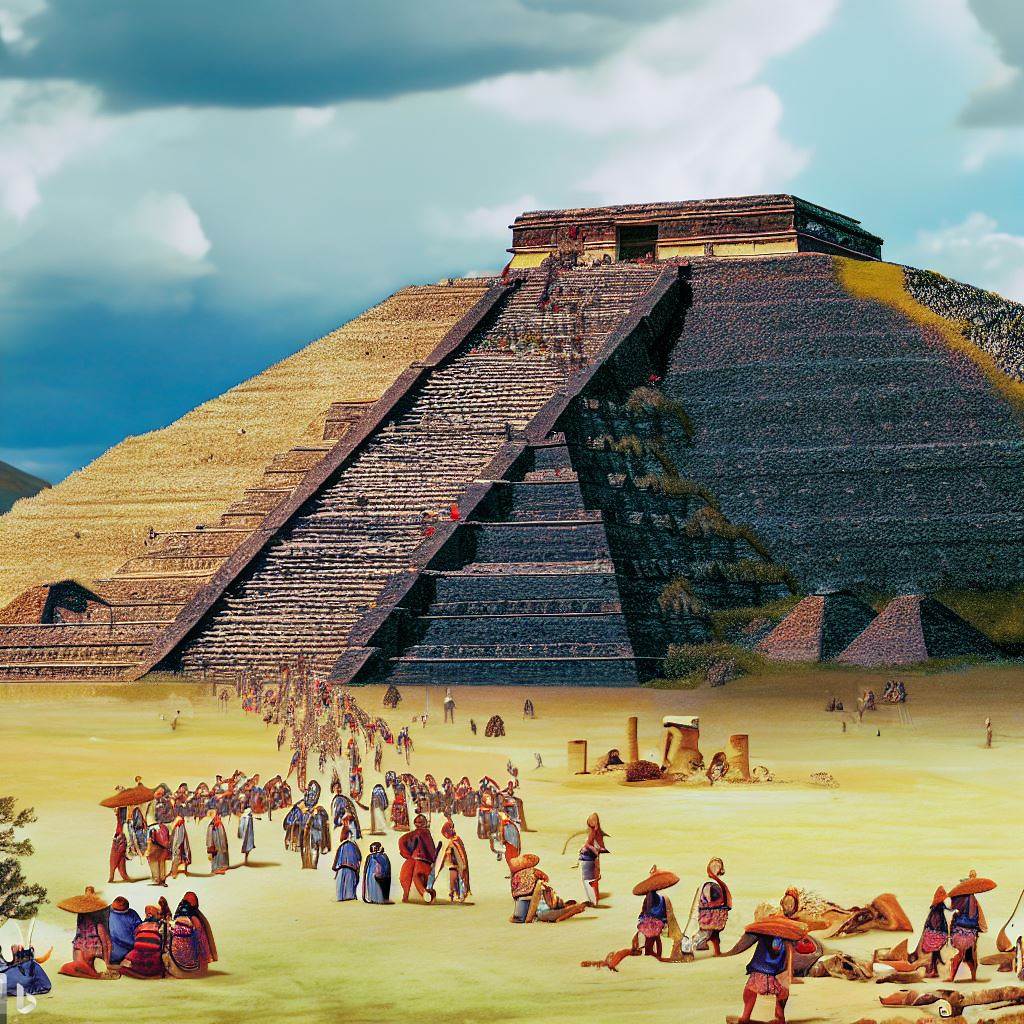
2.2. Pyramid of the Moon: Mystical Significance
Delving into the Enigmatic Pyramid of the Moon
As we turn our attention to the Pyramid of the Moon, a sense of mystique envelops this structure. Smaller in stature but no less significant, this pyramid holds its own secrets and stories. Situated at the northern end of the Avenue of the Dead, it commands attention with its enigmatic presence.
Key Points:
- Architectural Harmony: Discover how the Pyramid of the Moon complements the Pyramid of the Sun in Teotihuacan’s urban design.
- Ceremonial Significance: Explore the pyramid’s role in religious and ceremonial activities.
- Alignment with the Moon: Understand the pyramid’s potential lunar alignments and their cultural implications.
Architectural Marvels
Despite its smaller size, the Pyramid of the Moon showcases remarkable architectural achievements. From its intricate construction to the symbolism embedded in its design, this pyramid serves as a window into the cultural and artistic sophistication of Teotihuacan.
Key Points:
- Step Pyramid Design: Examine the stepped design of the Pyramid of the Moon and its significance.
- Decorative Elements: Appreciate the decorative elements, including talud-tablero architecture, found on this pyramid.
- Ritual Platforms: Learn about the ceremonial platforms and altars that grace the pyramid’s summit.
Rituals and Symbolism
The Pyramid of the Moon was undoubtedly central to the religious and ceremonial life of Teotihuacan. Here, we explore the rituals that took place on its terraces, the symbolism encoded in its construction, and the spiritual significance it held for the city’s inhabitants.
Key Points:
- Ritual Practices: Gain insights into the religious ceremonies and rituals conducted on the Pyramid of the Moon.
- Solar and Lunar Symbolism: Uncover the pyramid’s alignment with celestial events and its symbolic importance.
- Cosmic Worldview: Understand how Teotihuacan’s inhabitants perceived the universe through the lens of this sacred pyramid.
2.3. Temple of the Feathered Serpent: A Cultural Gem
Understanding the Significance
The Temple of the Feathered Serpent, also known as the Temple of Quetzalcoatl, stands as a testament to the rich cultural tapestry of Teotihuacan. In this section, we delve into the historical and cultural significance of this magnificent temple.
Key Points:
- Quetzalcoatl Worship: Explore the role of the feathered serpent deity in Mesoamerican culture.
- Intricate Carvings: Appreciate the intricate carvings and sculptures that adorn the temple’s façade.
- Cultural Exchange: Learn about the possible cultural exchange and influences that shaped this temple.
Artistic Details and Carvings
The Temple of the Feathered Serpent boasts some of the most intricate and finely detailed sculptures in Teotihuacan. Here, we examine the artistic mastery that went into crafting these remarkable carvings, shedding light on the skilled artisans of the ancient city.
Key Points:
- Serpent Imagery: Analyze the feathered serpent motifs and iconography found throughout the temple.
- Fine Artistry: Appreciate the level of artistic detail and precision displayed in the temple’s decorations.
- Ritual Context: Understand how these carvings were integrated into religious practices and ceremonies.
Uncovering the Mysteries
As with many aspects of Teotihuacan, the Temple of the Feathered Serpent conceals its share of mysteries. We explore the unanswered questions surrounding the temple’s use, its relationship with other structures, and the enigmatic symbols it contains.
Key Points:
- Enigmatic Symbols: Decode the symbolic language of the temple’s carvings and their potential meanings.
- Ritual Significance: Consider the temple’s role in religious rituals and its place in the city’s spiritual landscape.
- Ongoing Research: Delve into the current research efforts aimed at unraveling the mysteries of this cultural gem.
A graph comparing the heights of various notable pyramids around the world, arranged in ascending order:
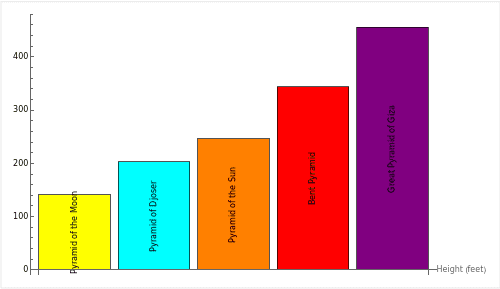
From bottom to top:
- The bar representing the Pyramid of the Moon is colored yellow. 141 feet (approx. 43 meters)
- The bar representing the Pyramid of Djoser is colored cyan (teal). 203 feet (approx. 62 meters)
- The bar representing the Pyramid of the Sun is colored orange. 246 feet (approx. 75 meters)
- The bar representing the Bent Pyramid is colored red. 344 feet (approx. 105 meters)
- The bar representing the Great Pyramid of Giza is colored purple. 456 feet (approx. 139 meters)
In the next chapter, we will delve into Teotihuacan’s cultural significance, focusing on aspects such as religion and spirituality, art and culture, and the daily life of its inhabitants.
Chapter 3. Teotihuacan’s Cultural Significance
Teotihuacan, the ancient city of pyramids, is not merely a testament to architectural mastery; it also holds profound cultural significance. In this chapter, we will journey into the heart of Teotihuacan’s cultural tapestry, exploring its rich religious and spiritual practices, vibrant art and culture, and the intricacies of daily life within this ancient metropolis.
Mayan culture is one of the most fascinating and complex cultures in the world. It is known for its advanced mathematics, astronomy, and writing system. The Maya also had a rich mythology and religion, and their art and architecture is some of the most impressive in the Americas.
Mayan Culture
Here are some of the key aspects of Mayan culture:
- Religion: The Maya were polytheistic, and they worshipped a variety of gods and goddesses. Their most important gods were the rain god Chaac, the sun god Kinich Ahau, and the corn god Hun Hunahpu.
- Writing system: The Maya had a sophisticated writing system that used hieroglyphs. This system was used to record history, mythology, and religious texts.
- Mathematics: The Maya were advanced mathematicians, and they developed a system of numbers that was based on the number 20. They also developed a calendar system that was very accurate.
- Astronomy: The Maya were skilled astronomers, and they were able to track the movements of the sun, moon, and stars. They used this knowledge to develop a calendar system and to predict eclipses.
- Art and architecture: The Maya were skilled artists and architects. They built impressive temples, palaces, and pyramids. Their art was often brightly colored and featured geometric designs.
The Mayan culture declined in the 16th century after the Spanish conquest. However, many aspects of Mayan culture have survived, and they continue to be practiced by the Maya people today.
Here are some of the ways that Mayan culture is still alive today:
- The Maya language is still spoken by millions of people.
- The Maya people still practice many of their traditional customs, such as ancestor worship and rain dances.
- The Maya continue to create art and architecture that reflects their culture.
- The Maya have a strong sense of community and identity, which is rooted in their culture.
3.1. Religion and Spirituality
The Role of Religion in Teotihuacan
Religion was the cornerstone of life in Teotihuacan. The city was home to a complex pantheon of deities, and its inhabitants were deeply devout. Understanding the religious framework of Teotihuacan is crucial to unraveling the city’s mysteries.
Key Points:
- Polytheistic Beliefs: Explore the diverse array of deities worshiped in Teotihuacan.
- Cosmic Connection: Learn how religion was intertwined with celestial phenomena.
- Ritual Practices: Discover the religious ceremonies and rituals that took place within the city.
Deities and Worship
Who were the gods of Teotihuacan, and what were they revered for? In this section, we delve into the pantheon of deities and the various ways in which they were venerated by the city’s inhabitants.
Key Points:
- Major Deities: Introduce yourself to the principal deities of Teotihuacan, including Tlaloc, Quetzalcoatl, and more.
- Iconography and Symbolism: Explore the symbols associated with each deity and their significance.
- Ritual Offerings: Learn about the offerings and sacrifices made to appease the gods.
Unveiling the Mysteries of Teotihuacan’s Enigmatic Religion
Teotihuacan, the ancient Mesoamerican city, is not only renowned for its grand pyramids and intricate murals but also for the profound religious beliefs that shaped its culture. The enigmatic religion of Teotihuacan remains a captivating subject of study and fascination. In this exploration, we will delve into the religious practices, deities, and rituals that defined the spiritual landscape of this extraordinary civilization.
A Multifaceted Religious Tapestry
One of the most striking aspects of Teotihuacan’s religion is its multifaceted nature. It was a complex tapestry interwoven with various deities, rituals, and cosmological beliefs. Unlike some other Mesoamerican cultures, Teotihuacan’s religious landscape was not dominated by a single deity; instead, it featured a pantheon of gods and goddesses, each with their unique significance.
The Feathered Serpent Deity: Quetzalcoatl
Among the many deities worshipped at Teotihuacan, the Feathered Serpent deity, known as Quetzalcoatl, held a prominent place. Quetzalcoatl was revered not only in Teotihuacan but also in later Mesoamerican civilizations. Often depicted as a feathered serpent, this deity represented a complex amalgamation of concepts, including creation, fertility, and cosmic order.
Rituals and Offerings
Rituals played a pivotal role in Teotihuacan’s religious practices. Ceremonial centers and pyramids were the focal points for these rituals. Human sacrifices were found at the foundations of structures like La Ciudadela, underscoring the significance of these ceremonies. These acts were not seen as mere blood offerings but rather as a way to maintain the delicate balance between the mortal world and the divine.

Cosmology and the Universe
Teotihuacan’s religion was intricately linked to cosmological beliefs. The city’s layout itself reflects these cosmic connections, with the Pyramids of the Sun and Moon aligned with celestial bodies. The orientation of these structures was not arbitrary; it was a deliberate attempt to harmonize human existence with the cosmos. The rituals and ceremonies conducted in Teotihuacan were seen as a means to sustain this cosmic order.
Polytheism and Diversity
Evidence suggests that Teotihuacan was a multi-ethnic city, and its religion reflected this diversity. While Nahuatl was likely one of the predominant languages used in religious ceremonies, the presence of other languages and cultural influences cannot be overlooked. This polytheistic approach allowed for the coexistence of various belief systems within the city.
The Legacy of Teotihuacan’s Religion
Teotihuacan’s religious practices left an indelible mark on subsequent Mesoamerican civilizations. The influence of the city’s religion can be traced in the art, architecture, and religious beliefs of the Aztecs and other cultures that followed. Quetzalcoatl, the Feathered Serpent deity, continued to be venerated long after the fall of Teotihuacan, demonstrating the enduring impact of this ancient city’s spirituality.
In conclusion, the religion of Teotihuacan is a testament to the sophistication and complexity of this ancient civilization. Its multifaceted approach to spirituality, reverence for diverse deities, and intricate rituals offer a window into a world where the earthly and the celestial were intricately connected. As we continue to unravel the mysteries of Teotihuacan, its religion remains a central piece of the puzzle, inviting us to explore further and delve deeper into the spiritual heart of this extraordinary city.
3.2. Art and Culture
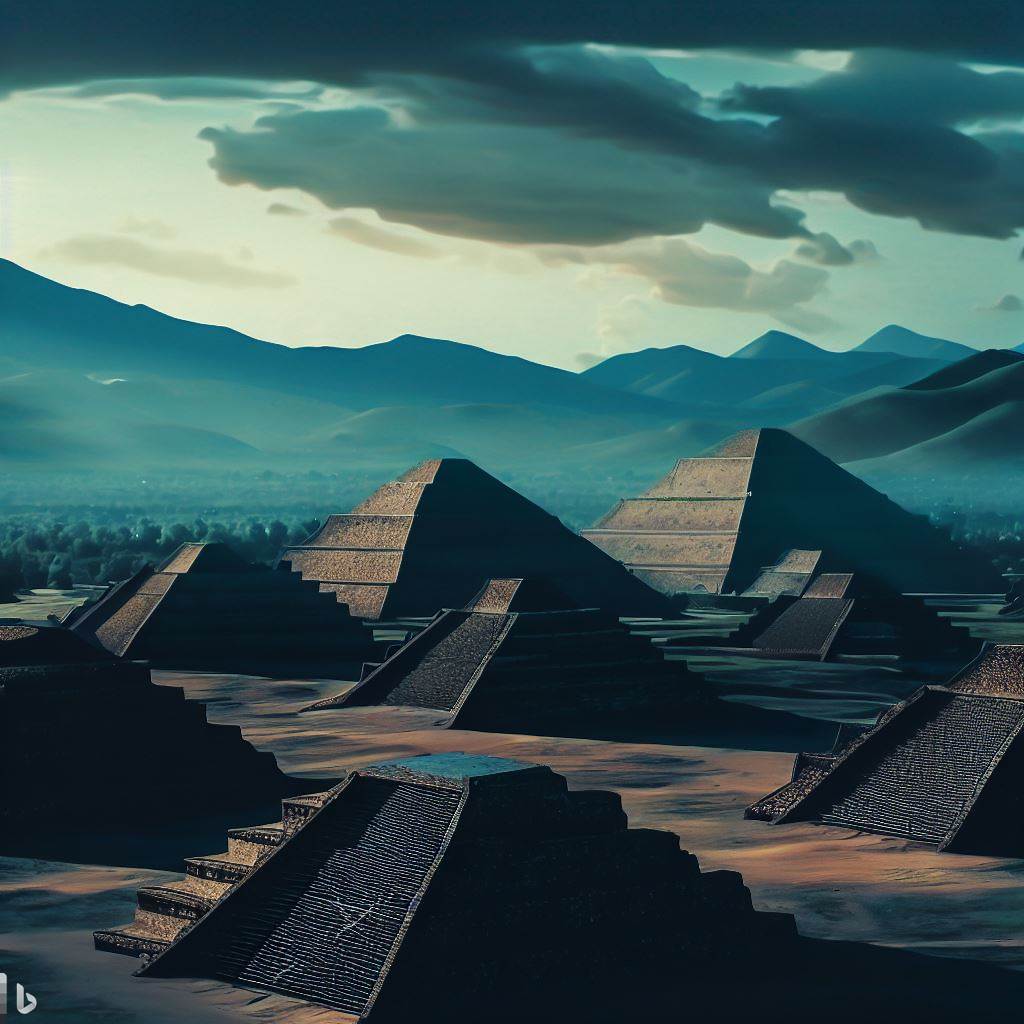
Flourishing Artistic Expression
Teotihuacan was a thriving hub of artistic expression. Its murals, pottery, and iconography provide a window into the cultural and creative prowess of its people. In this section, we unveil the artistic treasures of the ancient city.
Key Points:
- Vibrant Murals: Discover the intricately painted murals that adorned Teotihuacan’s buildings.
- Ceramic Masterpieces: Explore the exquisite pottery crafted by Teotihuacan artisans.
- Iconic Imagery: Understand the symbolism and themes depicted in Teotihuacan’s art.
Pottery, Murals, and Iconography
Teotihuacan’s artistry extended beyond mere decoration; it conveyed stories, beliefs, and cultural motifs. Here, we analyze the deeper meanings embedded in the city’s pottery, murals, and iconography.
Key Points:
- Narrative Murals: Decode the stories and narratives told through Teotihuacan’s murals.
- Cultural Significance: Understand how art played a role in the city’s cultural identity.
- Artistic Techniques: Explore the artistic techniques employed by Teotihuacan’s craftsmen.
3.3. Daily Life in Teotihuacan
Social Structure and Economy
The city of Teotihuacan was a bustling metropolis with a well-defined social structure and a thriving economy. In this section, we take a glimpse into the lives of its inhabitants and how the city was organized.
Key Points:
- Social Hierarchy: Examine the social classes and roles within Teotihuacan society.
- Economic Activities: Learn about the economic activities that sustained the city.
- Trade and Commerce: Explore the city’s trade networks and the goods it exchanged with other Mesoamerican regions.
Housing and Urban Planning
The layout of Teotihuacan was not haphazard; it was a meticulously planned city with structured housing and urban organization. Here, we delve into the architectural layout of the city and the homes of its residents.
Key Points:
- Urban Grid: Understand the grid-based layout of Teotihuacan’s streets and avenues.
- Residential Structures: Explore the types of housing that existed in the city.
- Community Spaces: Learn about the communal areas where residents gathered.
In the next chapter, we will unravel the mysteries of Teotihuacan’s history and abandonment, exploring the various theories that surround the enigmatic downfall of this once-thriving civilization.
Chapter 4. Unraveling the Mysteries of Teotihuacan
Teotihuacan, shrouded in the mists of time, beckons us with its enigmatic history. In this chapter, we embark on a journey to unravel the mysteries that have perplexed historians, archaeologists, and explorers for centuries. From the city’s unexplained abandonment to the ongoing quest for knowledge, Teotihuacan holds secrets waiting to be discovered.
4.1. Lost in Time: The Abandonment of Teotihuacan
Theories Behind the Enigmatic Abandonment
Teotihuacan’s decline and abandonment are among the most compelling enigmas of ancient history. We delve into the theories that attempt to explain the mysterious exodus of its inhabitants and the gradual fading of this once-thriving civilization.
Key Points:
- Climate and Environmental Factors: Explore how climate changes may have played a role in Teotihuacan’s decline.
- Socio-Political Turmoil: Uncover theories suggesting that internal conflicts or external invasions led to the city’s fall.
- Economic Factors: Learn how changes in trade and resource availability may have influenced the city’s fate.
Post-Abandonment Occupancy
After Teotihuacan was abandoned, the land did not remain barren. Discover who the subsequent inhabitants were and how they interacted with the remnants of this ancient city.
Key Points:
- Teotihuacan as a Ghost City: Explore how the city became a hauntingly empty landscape.
- Toltec Influence: Learn about the Toltecs, who believed Teotihuacan to be a sacred place.
- Influence on Aztec Culture: Understand how Teotihuacan continued to shape the cultures of the region.
4.2. Ongoing Research and Discoveries
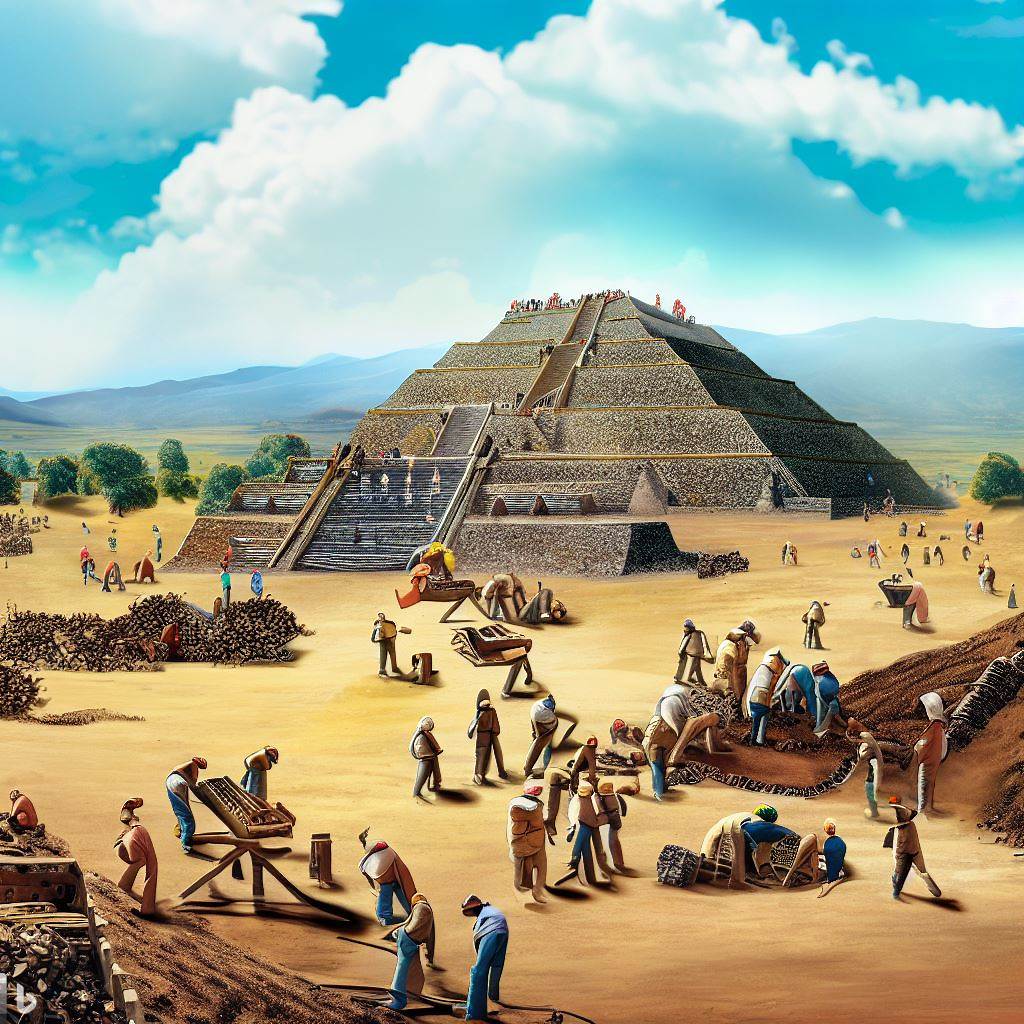
- This figurine measures 5.25″ tall, 8.5″ long and 8.5″ wide approximately.
- Made of designer composite resin, hand painted and polished.
Archaeological Excavations and Findings
Modern archaeology has breathed new life into the ancient stones of Teotihuacan. We delve into the exciting excavations and discoveries that have shed light on the city’s past.
Key Points:
- Teotihuacan’s Underworld: Explore recent archaeological digs beneath the city’s surface.
- Buried Treasures: Learn about the artifacts and structures unearthed by archaeologists.
- Insights into Everyday Life: Understand how these findings provide insights into the daily lives of Teotihuacan’s inhabitants.
Insights from Modern Science
Modern scientific methods, from remote sensing to DNA analysis, are revolutionizing our understanding of Teotihuacan. In this section, we uncover how cutting-edge technology is unveiling new facets of this ancient wonder.
Key Points:
- LiDAR Technology: Discover how LiDAR has revealed hidden structures and avenues.
- DNA Studies: Explore the genetic research shedding light on Teotihuacan’s population.
- The Future of Exploration: Learn about the prospects of continued scientific inquiry.
4.3. The Preservation Efforts
Protecting Teotihuacan’s Legacy
Preservation is paramount to ensuring that future generations can also marvel at Teotihuacan’s wonders. We delve into the efforts to safeguard this cultural treasure.
Key Points:
- UNESCO World Heritage Site: Understand the significance of Teotihuacan’s inclusion on the World Heritage list.
- Conservation Challenges: Learn about the threats facing the site, from climate change to tourism.
- Community Involvement: Explore how local communities are contributing to the preservation of their heritage.
In the next chapter, we will guide you through planning your journey to Teotihuacan, offering tips for a memorable visit, insights into guided tours, and recommendations for exploring the pyramids and other attractions.
Chapter 5. Visiting Teotihuacan Today
Teotihuacan, with its awe-inspiring pyramids and rich history, beckons modern explorers to step back in time and experience its wonders. In this chapter, we will guide you through planning your journey to Teotihuacan, offering tips for a memorable visit, insights into guided tours, and recommendations for exploring the pyramids and other attractions.
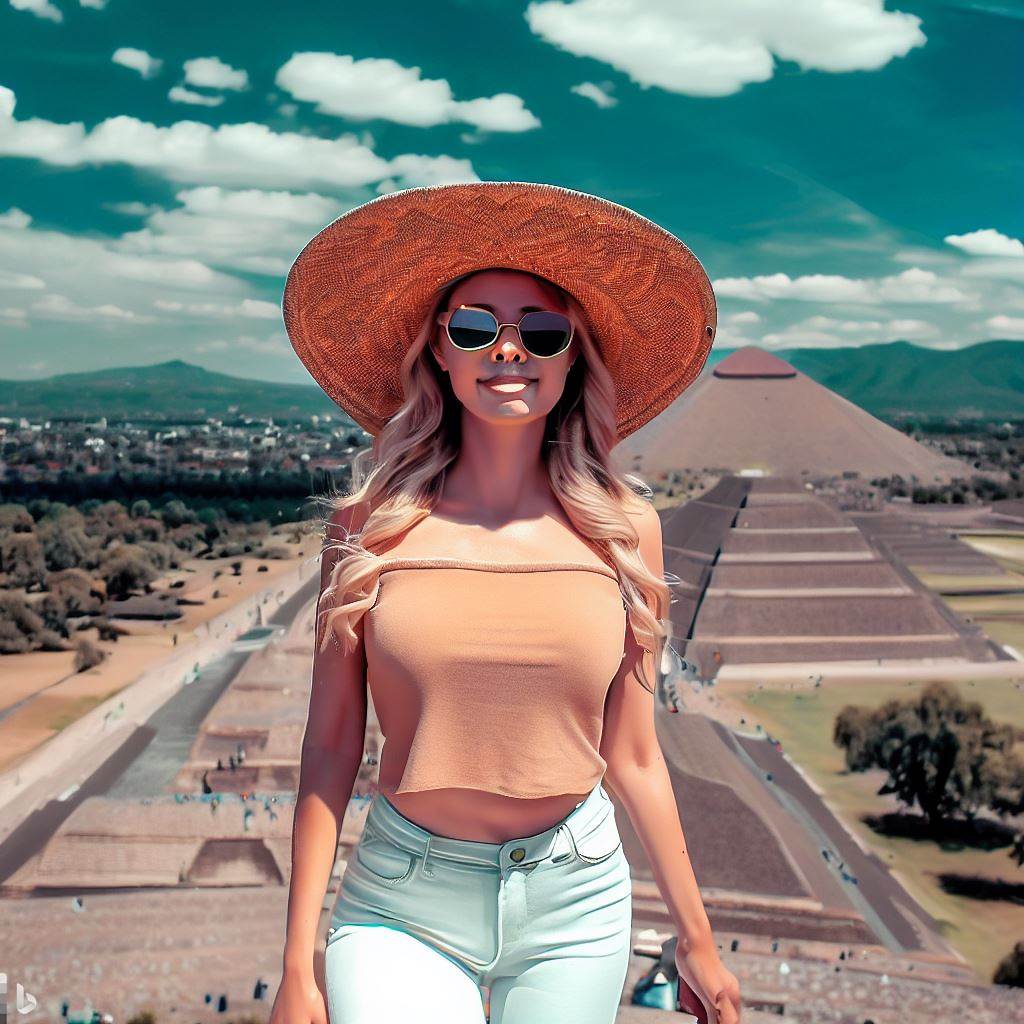
- 5 PIECE CANVAS WALL ART SIZE: 12X20 Inch x 2panels, 12X30 Inch x 2 panels, 12X40Inch x 1panel(30x50cmx2pcs,30x75cmx2pcs,30x100cmx1pcs).
- POSTERS AND PRINTS HD PRINTS ON CANVAS:High Quality Glossy Canvas with long lasting durability Printed at high resolution using the latest state of the art colour technology ensures sharp & vivid images every time
- FRAMED WALL ART: Stretched and framed,ready to hang. A strong hook is already fixed on each wooden inner frame for easy hanging out of box.
- WALL PICTURES FOR LIVING ROOM: A Ideal Christmas and New Year Gift, Perfect Wall Decorations Paintings for Bedroom, Kitchen, Diningroom, Office, Hotel, Bar Etc. Due to Different Brand of Monitors, Actual Wall Art Colors May Be Slightly Different from the Product Image
- ARTWORK PACKAGE: Your paintings will be carefully packaged in bubble wrap and cardboard to ensure they reach you in perfect condition.
5.1. Planning Your Teotihuacan Journey
Tips for a Memorable Visit
Before embarking on your Teotihuacan adventure, it’s essential to plan effectively to ensure a memorable experience. Here are some valuable tips:
Key Points:
- Best Times to Visit: Discover the ideal seasons for exploring Teotihuacan.
- Ticket Information: Learn about ticket prices and how to purchase them.
- Guided vs. Self-Guided Tours: Consider the advantages of both options.
Guided Tours and Visitor Centers
Teotihuacan offers guided tours to enhance your understanding of this ancient city. Explore the benefits of joining a guided tour and learn about visitor centers that can enrich your experience.
Key Points:
- Expert Insights: Find out how guided tours provide in-depth knowledge.
- Visitor Centers: Explore the amenities and services offered at these centers.
- Accessibility Information: Ensure a comfortable visit for all travelers.
5.2. Experiencing the Pyramids
Climbing the Pyramid of the Sun and Moon
The iconic pyramids of Teotihuacan are at the heart of your visit. Discover the exhilaration of climbing the Pyramid of the Sun and Moon and what awaits at their summits.
Key Points:
- Pyramid of the Sun: Learn about its significance and challenges of the climb.
- Pyramid of the Moon: Uncover its mystical allure and breathtaking views.
Admiring the Temple of the Feathered Serpent
The Temple of the Feathered Serpent is a masterpiece of Teotihuacan’s architecture. Explore this cultural gem and its intricate details.
Key Points:
- Artistic Details: Marvel at the intricate carvings and sculptures.
- Historical Significance: Understand the role of this temple in Teotihuacan’s culture.
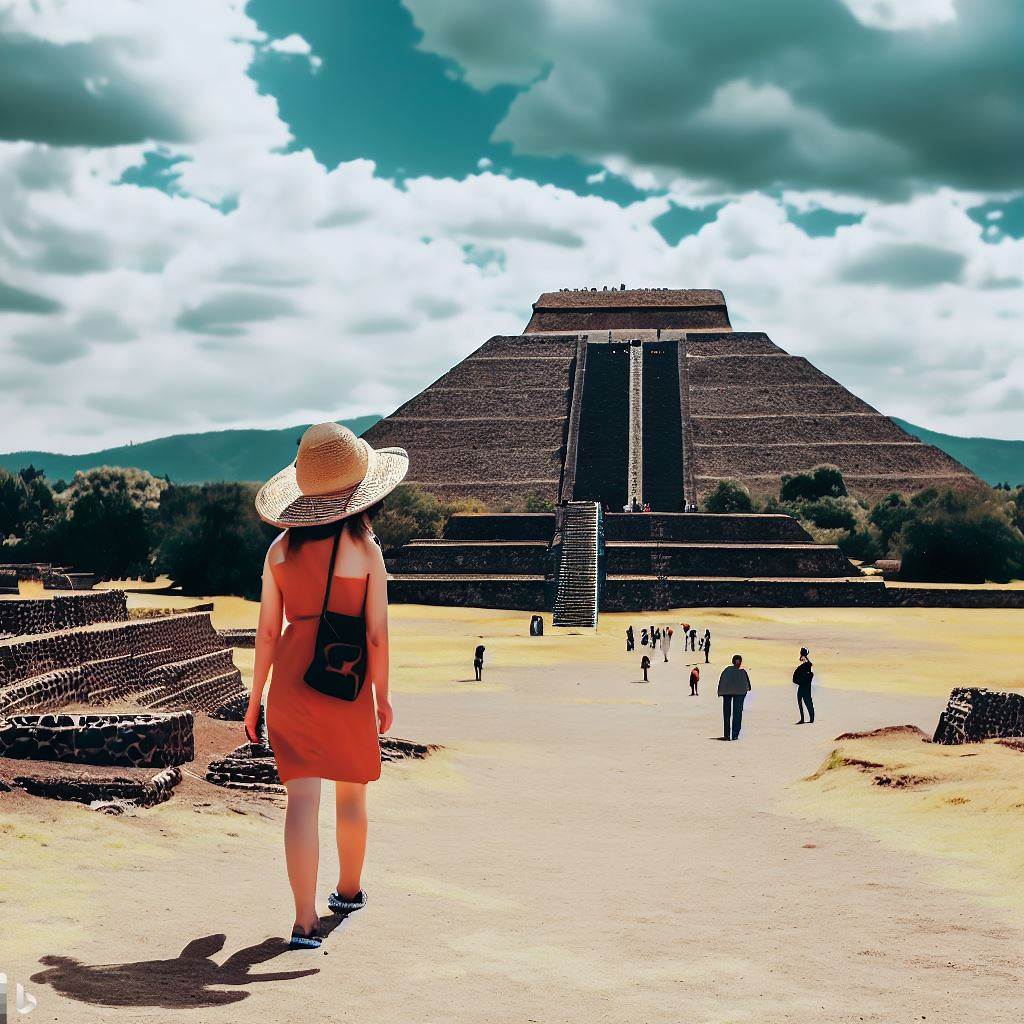
5.3. Beyond the Pyramids: Other Attractions
Teotihuacan offers more than just pyramids. Explore the Avenue of the Dead, Ciudadela, and other attractions that enrich your visit.
Key Points:
- Avenue of the Dead: Discover its significance and notable structures.
- Ciudadela: Explore the grand plaza and its unique features.
- Museums and Souvenirs: Learn about opportunities to immerse yourself in Teotihuacan’s history and culture.
5.4. Teotihuacan’s Cultural Significance Today
Celebrations and Festivals
Teotihuacan’s cultural heritage is not confined to the past. Learn about the vibrant celebrations and festivals that continue to thrive here.
Key Points:
- Annual Festivals: Explore the festivities that honor Teotihuacan’s history.
- Local Traditions: Discover the customs and traditions of the nearby communities.
Local Communities and Traditions
Teotihuacan is more than an archaeological site; it’s a living, breathing place with local communities preserving their traditions. Gain insights into their way of life and contributions to the site’s preservation.
Key Points:
- Community Involvement: Understand how locals are actively engaged in the site’s conservation.
- Cultural Exchange: Learn about opportunities to interact with residents and share experiences.
As you prepare for your journey to Teotihuacan, the insights in this chapter will help you make the most of your visit. From exploring the pyramids to immersing yourself in local culture, Teotihuacan offers a truly enchanting experience.
Chapter 6. FAQs: Teotihuacan in Detail
Teotihuacan is a place of wonder and mystery, and it’s natural to have questions. In this chapter, we’ll provide detailed answers to some of the most frequently asked questions about Teotihuacan, helping you gain a deeper understanding of this ancient city.
6.1. What Does “Teotihuacan” Mean?
Teotihuacan is a Nahuatl word, the language of the Aztecs, and it holds profound significance. Translated, it means “The Place Where the Gods Were Created.” This name reflects the religious and spiritual importance of the city in Mesoamerican culture.
6.2. Who Built Teotihuacan, and When?
The exact builders of Teotihuacan remain a mystery. It is believed to have been established around 100 BCE, and its construction spanned several centuries. While the identity of its founders is unknown, the city’s development was a collaborative effort of the diverse Mesoamerican peoples who inhabited the region.
6.3. What Was the Purpose of the Pyramids?
The pyramids of Teotihuacan served multifaceted purposes. They were religious centers, platforms for ceremonies, and symbols of power. The Pyramid of the Sun, for example, likely had religious significance and served as a place of worship and pilgrimage.
6.4. Are There Any Recent Discoveries at Teotihuacan?
Teotihuacan continues to reveal its secrets through ongoing archaeological excavations and research. Recent discoveries include intricate murals, new tunnels, and artifacts that shed light on daily life and cultural practices in the city.
6.5. How Can I Visit Teotihuacan and What Should I Know Before Going?
Visiting Teotihuacan is a rewarding experience, but some essential considerations will enhance your trip. Here’s what you should know before you go:
- Accessibility: Teotihuacan is located about 50 kilometers (31 miles) northeast of Mexico City. You can reach it by bus, car, or guided tour.
- Tickets: Entry tickets are required, and it’s advisable to purchase them in advance to avoid long lines.
- Climate: Teotihuacan has a high-altitude desert climate, so dress accordingly with comfortable clothing and sun protection.
- Guided Tours: Consider joining a guided tour to gain insights into the history and significance of the site.
These FAQs provide valuable insights for those planning a visit to Teotihuacan, ensuring a more informed and enriching experience.
Chapter 7. Conclusion
As we conclude our journey through the captivating world of Teotihuacan, it’s time to reflect on the timeless allure of its pyramids and the historical significance that permeates this ancient city. This conclusion also serves as a call to action, encouraging exploration and preservation of this cultural treasure.
Reflecting on Teotihuacan’s Historical Significance
Teotihuacan stands as a testament to the remarkable achievements of ancient Mesoamerican civilizations. Its monumental pyramids, intricate murals, and religious symbolism offer a window into a society that flourished over a millennium ago.
The city’s architectural wonders, such as the Pyramid of the Sun and the Temple of the Feathered Serpent, showcase the advanced engineering and artistic skills of its builders. They also underscore the deep spiritual connection that existed between the people of Teotihuacan and their deities.
Encouraging Exploration
Teotihuacan’s mysteries continue to captivate the curious and the scholarly alike. Ongoing research and archaeological excavations promise to unveil more secrets buried beneath the layers of time. Explorers, historians, and archaeologists are drawn to this site, eager to uncover the stories hidden within its ancient walls.
Preservation of Teotihuacan’s Legacy
Preserving Teotihuacan is not just a matter of historical importance but also an ethical responsibility. The delicate murals, carvings, and structures require protection from the elements and the impact of tourism. Conservation efforts are essential to ensure that future generations can continue to marvel at the wonders of Teotihuacan.
In conclusion, Teotihuacan is more than a collection of stone structures; it’s a testament to the ingenuity and spirituality of an ancient civilization. Its allure remains timeless, and its mysteries continue to inspire. As you embark on your own journey to Teotihuacan, remember to tread lightly, respect its heritage, and revel in the profound historical significance of this extraordinary place.
- Hardcover Book
- English (Publication Language)
- 444 Pages – 09/26/2017 (Publication Date) – University of California Press (Publisher)
- Wellman, Billy (Author)
- English (Publication Language)
- 716 Pages – 04/11/2023 (Publication Date) – Billy Wellman (Publisher)
- MADHA, HMZ (Author)
- English (Publication Language)
- 50 Pages – 12/08/2023 (Publication Date) – Independently published (Publisher)
- Amazon Kindle Edition
- Wellman, Billy (Author)
- English (Publication Language)
- 144 Pages – 03/03/2023 (Publication Date)
- Highest quality semi-gloss vinyl; Vibrant and bright
- Removable and repositionable with no sticky residue
- Wall Paintings Size: Each panel size is 28″x14″, 3 panels in total, totally 42″Wx28″H(70x105cm). Canvas art wall paintings is a perfect gift for your relatives and friends.
- Wall Art Feature: Canvas art wall painting is printed on non woven canvas, non-toxic & odourless ink, perfect colours and sharpness of the image, UV resistant and not fade for a long time.
- Hanging Method: Wall paintings has been perfectly stretched on the wooden frame, each panel has a black hook already mounted on the wooden bar. Ready to hang picture wall decor for living room.
- Art Print Packaging: Our paintings will be carefully packaged in bubble wrap and cardboard to hold it stable and avoid shipment damage. Ensure artwork reach to you in perfect condition.
- Suitable Places: Living room, bedroom, kitchen, bathroom, dinning room, home, hotel, cafe, office. Due to the different brand of monitor setting the printing colors may appear slightly different from the image color.
- This Mesoamerican Aztec Pyramid Backflow Incense Burner figurine measures 3.5″ tall, 5.75″ long and 5.75″ wide approximately. It weighs about 14 ounces.
- This Mesoamerican Aztec Pyramid Backflow Incense Burner figurine is made of designer composite resin, hand painted and polished.
- Despite the towering reputation of Egypt’s Great Pyramids at Giza, the Americas actually contain more pyramid structures than the rest of the planet combined. Mesoamerican peoples built pyramids from around 1000 B.C. up until the time of the Spanish conquest in the early 16th century.
- The most famous single pyramid in Latin America is the Pyramid of the Sun at Teotihuacán, Mexico. In this civilization and structure, the Aztec empire spirituals sacrifice human heart and blood. Although bloody and gory, the pyramids of the Aztec hold special wonder in people’s minds.
- Embark on a mesmerizing journey through time and culture with our Aztec Pyramid Backflow Incense Cone Burner – a unique fusion of ancient mystique and modern functionality. Crafted with intricate detail, this burner features the iconic Aztec pyramid design, evoking the grandeur of a bygone era. The mesmerizing spectacle unfolds as the backflow incense cone releases fragrant smoke, cascading down the steps like a mystical waterfall.
- Canvas Wall Art:Print with high quality inks and canvas, and then stretch it over a thick wooden Unframed.
- Size:24″x16″,at this size, it is sure to be the focal point of any location such as living room, bedroom, kitchen, office, Hotel, dining room, office, bathroom or bar.
- Ready to hang: The art comes ready to hang with no installation required, each of them are ready to hang anywhere with hook already mounted on the back.
- Best Gift: A perfect gifts to your relatives and friends for Christmas, Thanksgiving, wedding, anniversary,mother’s Day, father’s Day, valentine, birthday and others.
- Tips: If any questions, please email us first time, it will help us understand the situation and improve.Due to monitor display issues, actual wall art colors may be slightly different from the product image.
- This Pyramid of the Sol (Sun) T-shirt comes in a distressed look.
- Vintage Aztec Tee for men
- Lightweight, Classic fit, Double-needle sleeve and bottom hem
- Smith, Raven (Author)
- English (Publication Language)
- 78 Pages – 10/06/2010 (Publication Date) – CreateSpace Independent Publishing Platform (Publisher)

